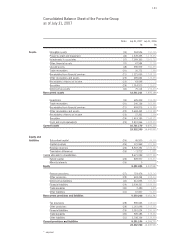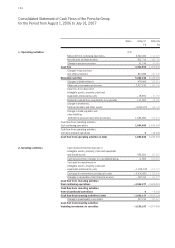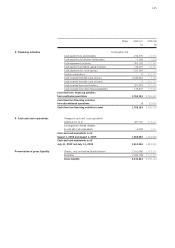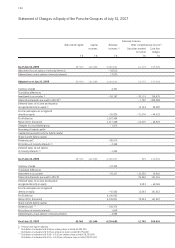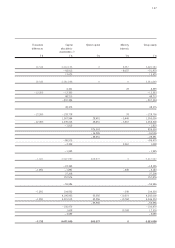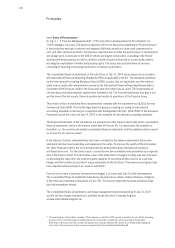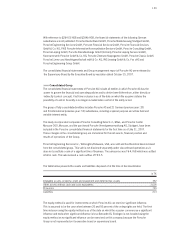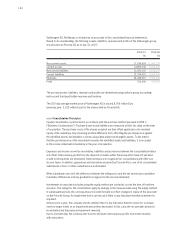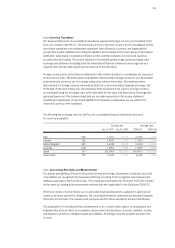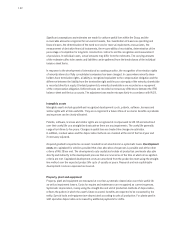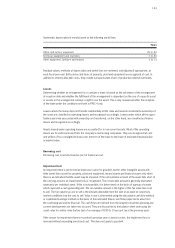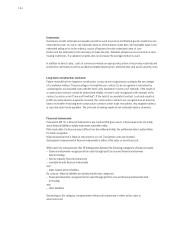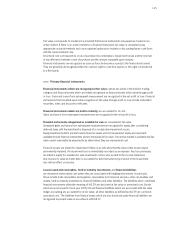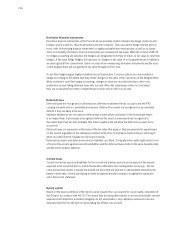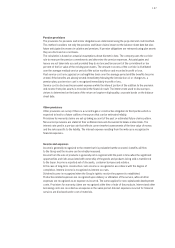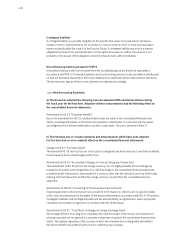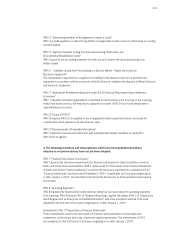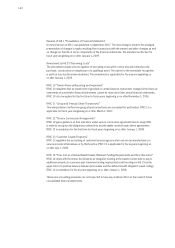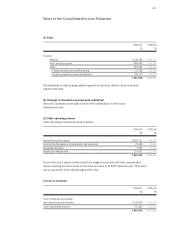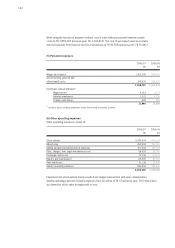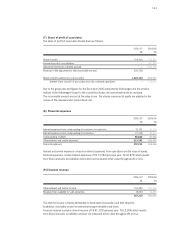Porsche 2006 Annual Report Download - page 135
Download and view the complete annual report
Please find page 135 of the 2006 Porsche annual report below. You can navigate through the pages in the report by either clicking on the pages listed below, or by using the keyword search tool below to find specific information within the annual report.
133
Years
Office and factory equipment 25 to 40
Technical equipment and machines 7 to 20
Other equipment, furniture and fixtures 3 to 13
Residual values, methods of depreciation and useful lives are reviewed, and adjusted if appropriate, at
each fiscal year end. Self-constructed items of property, plant and equipment are recognized at cost. In
addition to directly allocable costs, they include a proportionate share of production-related overheads.
Leases
Determining whether an arrangement is or contains a lease is based on the substance of the arrangement
at inception date and whether the fulfillment of the arrangement is dependent on the use of a specific asset
or assets or the arrangement conveys a right to use the asset. This is only reassessed after the inception
of the lease under the conditions set forth in IFRIC 4 only.
Leases where the Group does not transfer substantially all the risks and rewards incidental to ownership of
the asset are classified as operating leases and recognized accordingly. Leases under which all the oppor-
tunities and risks associated with ownership are transferred, on the other hand, are classified as finance
leases and recognized accordingly.
Assets leased under operating leases are accounted for in non-current assets. Most of the operating
leases are for vehicles leased from the company’s own leasing companies. They are recognized at cost
and written off on a straight-line basis over the term of the lease to the lower of estimated residual value
or market value.
Borrowing cost
Borrowing cost is not disclosed as part of historical cost.
Impairment test
An impairment test is performed at least once a year for goodwill, but for other intangible assets with
finite useful lives as well as property, plant and equipment, leased assets and financial assets only when
there is an indication that the asset may be impaired. If the net realizable amount of the asset falls short of
the carrying amount, an impairment loss is recognized. The recoverable amount is generally estimated
separately per individual asset. If this is not possible, it is determined on the basis of a group of assets
which represent a cash generating unit. The recoverable amount is the higher of the fair value less cost
to sell. The fair value less cost to sell is the amount obtainable from the sale of an asset at customary
market conditions less the cost to sell. Value in use is determined using the discounted cash flow method
or capitalized earnings method on the basis of the estimated future cash flows expected to arise from
the continuing use and its disposal. The cash flows are derived from the long-term business planning and
current developments are taken into account. They are discounted to the balance sheet date using dis-
count rates for similar risks (before tax) of an average of 8.85 to 10 percent (as in the previous year).
If the reason for impairment losses recorded in previous years ceases to exist, the impairment loss is
reversed without exceeding amortized cost. This does not apply to goodwill.
Systematic depreciation is mostly based on the following useful lives:


